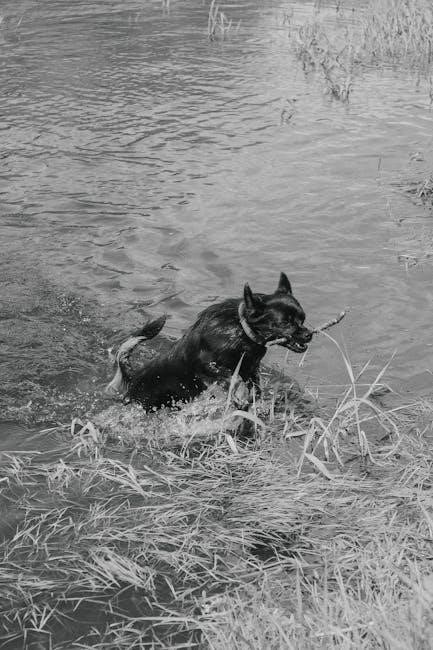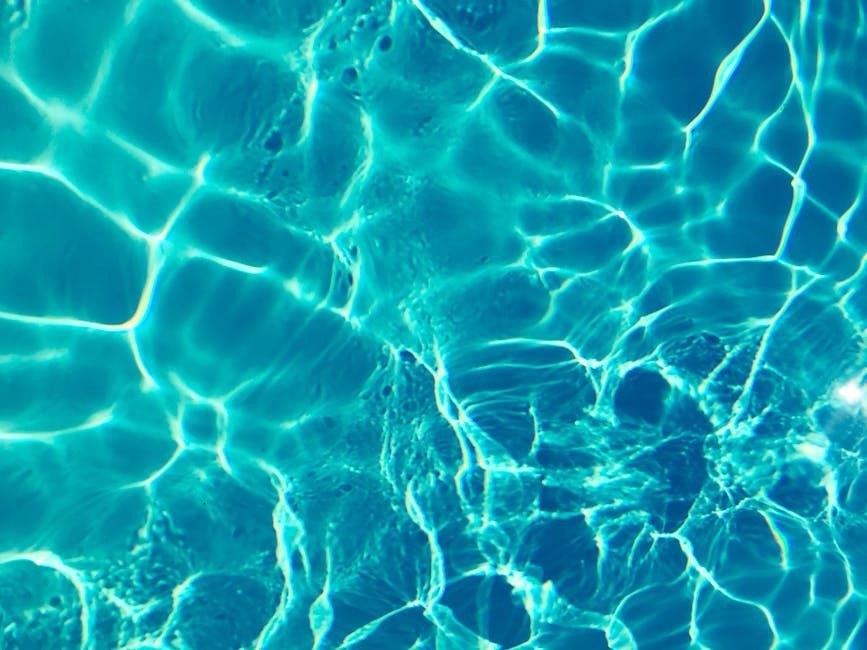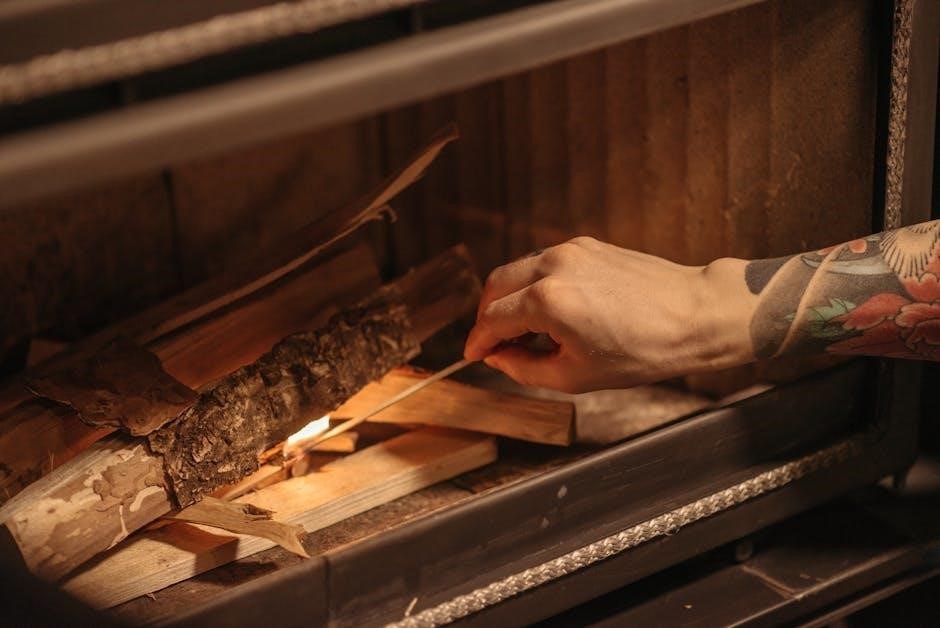
Safety Precautions
Ensure adult supervision at all times when children are near the pool. Keep electrical appliances away from water to prevent shock hazards. Never dive or jump into the pool. Always maintain a slip-resistant surface around the pool area. Regularly inspect the pool and equipment for damage. Follow all local safety regulations and guidelines.
- Supervision: Always supervise children near the pool.
- Electrical Safety: Keep appliances away from water.
- Pool Entry: Never dive or jump into the pool.
- Surroundings: Ensure a slip-resistant area around the pool.
- Inspections: Regularly check for damage or wear.
- Compliance: Adhere to local safety regulations.
1.1. Supervision and Access Restrictions
Always ensure adult supervision when children are near the pool. Remove pool ladders when the pool is not in use to prevent unauthorized access. Teach children to swim to reduce accidental drowning risks. Parents or guardians should learn CPR for emergencies. Never allow children to swim unsupervised‚ even if they know how. Ensure the pool area is securely fenced or gated to prevent accidental entry. Supervise all pool activities‚ especially when inflatables or slides are in use. Establish clear rules for pool usage and enforce them strictly. Regularly inspect the pool area for potential hazards. Keep rescue equipment nearby and ensure it is easily accessible. Supervision and access restrictions are critical for maintaining a safe swimming environment.
- Adult Supervision: Always present when children are near the pool.
- Access Control: Remove ladders and secure the area when not in use.
- Swimming Lessons: Teach children to swim to enhance safety.
- CPR Training: Essential for parents and guardians.
- Pool Rules: Clearly define and enforce safety guidelines.
1.2. Electrical Safety Guidelines
Keep all electrical appliances‚ such as radios and speakers‚ away from the pool area to prevent shock hazards. Ensure all electrical outlets near the pool are equipped with Ground Fault Circuit Interrupters (GFCI) for added safety. Avoid touching electrical components‚ including the pump and filter‚ without ensuring the ground under your feet is completely dry. Use only authorized replacement parts when servicing electrical equipment to maintain safety standards; Never operate electrical devices near water sources. Regularly inspect electrical connections for damage or wear. Keep the pool area clear of any electrical appliances during bad weather. Follow all local electrical safety regulations and guidelines provided in the manual. Electrical safety is crucial to prevent accidents and ensure a secure swimming environment.
- GFCI Outlets: Essential for poolside electrical safety.
- Dry Conditions: Ensure the area is dry when handling electrical parts.
- Authorized Parts: Use only approved replacements.
- Weather Precautions: Avoid electrical devices in bad weather.
- Regular Inspections: Check for damage or wear on electrical components.
1.3. Emergency Preparedness
Always ensure adult supervision when the pool is in use. Teach children basic water safety skills and ensure parents or caregivers are CPR-trained. Keep emergency contact numbers‚ such as 911‚ prominently displayed near the pool. Maintain a first aid kit and ensure it is easily accessible. In case of an emergency‚ act quickly but calmly to prevent accidents from escalating. Regularly practice safety drills with family members to ensure everyone knows what to do in case of an emergency. Never leave pool ladders in place when the pool is unsupervised to prevent unauthorized access; Ensure the pool area is clear of obstacles and tripping hazards. Always stay prepared to respond swiftly and effectively in emergency situations to ensure the safety of all pool users.
- Supervision: Always have an adult present.
- CPR Training: Essential for quick response.
- Emergency Contacts: Keep numbers visible.
- First Aid Kit: Must be readily available.
- Safety Drills: Practice regularly with family.
- Pool Access: Remove ladders when unsupervised.
- Area Safety: Keep the area free of hazards.

Installation Instructions
Choose a flat‚ stable surface for the pool. Ensure the ground is level and clear of debris. Follow the manual’s step-by-step guide for assembly. Tighten all connections securely.
- Location: Select a flat‚ stable area.
- Ground Preparation: Ensure surface is level and clear.
- Assembly: Follow the manual’s instructions carefully.
- Connections: Tighten all parts securely.
2.1. Site Preparation and Leveling
Before installing your Coleman pool‚ ensure the site is properly prepared. Choose a flat‚ stable area away from overhead power lines and underground utilities. Clear the ground of debris‚ grass‚ and uneven surfaces. Use a spirit level to ensure the ground is even. If necessary‚ dig slightly on one side to achieve levelness. Sand or compacted gravel can be used to create a smooth base. Ensure proper drainage to prevent water accumulation. Avoid installing on soft or uneven surfaces‚ as this can lead to structural issues. Follow the manual’s guidelines for site preparation to ensure a safe and stable setup.
- Location: Select a flat‚ stable area away from hazards.
- Clearing: Remove debris and vegetation from the site.
- Leveling: Use a spirit level to ensure even ground.
- Base: Use sand or gravel for a smooth surface.
- Drainage: Ensure proper water drainage.
2.2. Pool Assembly and Setup
Assemble the pool frame by following the step-by-step instructions in the manual. Start by laying out the base components and ensure all parts are accounted for. Attach the pool walls securely to the frame‚ making sure they are properly aligned. Install the pool floor according to the manufacturer’s instructions. Connect the skimmer and return fittings to the pool walls‚ ensuring they are tightly secured. Use the provided wrench to tighten all bolts and screws‚ following the recommended torque specifications. Once the frame and walls are in place‚ attach the top rail and ensure it is locked securely. Double-check all hardware for tightness before proceeding. Proper assembly is critical for the pool’s structural integrity and safety.
- Frame Assembly: Lay out and attach base components.
- Wall Installation: Secure walls to the frame.
- Pool Floor: Install according to instructions.
- Fittings: Attach skimmer and return fittings.
- Tightening: Use the provided wrench and follow torque specs.
- Top Rail: Lock securely for stability.
2.3. Filling the Pool with Water
Filling the pool with water requires careful attention to ensure safety and proper setup. Begin by attaching a garden hose to a clean water source and place the hose in the pool. Do not leave the pool unattended during filling‚ as this can lead to overfilling or other issues. Ensure the pool is on a completely level surface before adding water. Monitor the water level closely‚ filling to the recommended level specified in the manual. Avoid using hot water‚ as it may damage the pool liner. Once filled‚ inspect the pool for any leaks or irregularities. Always follow the manufacturer’s guidelines for filling the pool to ensure optimal performance and longevity. Proper filling is essential for the pool’s structural integrity and safe operation.
- Hose Connection: Use a clean water source and secure the hose.
- Supervision: Do not leave the pool unattended while filling.
- Leveling: Ensure the pool is on a level surface.
- Water Level: Fill to the recommended level only.
- Inspection: Check for leaks after filling.

Maintenance and Upkeep
Regularly clean the pool and filter to maintain water clarity and circulation. Inspect for damage and ensure proper chemical levels. Store the pool securely during off-season and drain according to manual instructions.
- Cleaning: Maintain pool and filter cleanliness.
- Inspections: Check for damage or wear.
- Chemicals: Keep water chemistry balanced.
- Storage: Secure pool during off-season.
- Draining: Follow manual guidelines for draining.

3.1. Cleaning the Pool and Filter
Regularly clean the pool to maintain clear water and optimal performance. Use a skimmer or vacuum to remove debris and sediment. Ensure the filter is cleaned according to the manufacturer’s instructions‚ typically every few weeks. Backwash the filter when pressure increases. Replace filter cartridges as needed. Check for any blockages in the circulation system. Keep the pool surface free from leaves and contaminants. Use appropriate cleaning products to prevent algae growth. Regular maintenance ensures efficient operation and safe swimming conditions. Refer to your Coleman pool manual for specific cleaning schedules and procedures.
- Skimming: Remove floating debris daily.
- Filter Maintenance: Clean or replace cartridges as needed.
- Backwashing: Perform when pressure increases.
- Surface Care: Keep the pool surface clean.
- Chemicals: Use recommended products to prevent algae.

3.2. Winterizing the Pool
Winterizing your Coleman pool is essential to protect it from damage during colder months. Begin by draining the pool to the recommended level‚ typically just below the skimmer; Clean the pool thoroughly‚ removing any debris or stains. Disconnect and store all equipment‚ such as pumps and filters‚ in a dry‚ protected area. Apply a winterizing chemical kit to prevent algae growth and corrosion. Cover the pool with a durable winter cover to keep out leaves and contaminants. Ensure the cover is tightly secured to withstand wind and weather conditions. Store any removable parts‚ like ladders and railings‚ in a safe place. Check the storage temperature for equipment‚ ideally between 4-40 ºC (39.2-104F). Regularly inspect the pool during winter to ensure everything remains secure and protected.
- Drainage: Lower water level below the skimmer.
- Cleaning: Remove debris and stains before winter.
- Equipment: Disconnect and store pumps and filters.
- Chemicals: Use winterizing kits to prevent algae.
- Cover: Secure a durable cover to protect the pool.
- Storage: Keep removable parts in a dry area.
- Inspections: Monitor the pool throughout winter.
3.3. Troubleshooting Common Issues
Identify and resolve common issues promptly to maintain your Coleman pool’s performance. If the water is cloudy‚ check and clean the filter‚ ensure proper chemical balance‚ and run the pump longer. For pump problems‚ refer to the pump manual for troubleshooting steps. Leaks around connections should be addressed by tightening loose fittings or replacing worn-out seals. If the pool frame is unstable‚ recheck the leveling and tighten all bolts. For persistent issues‚ consult the Coleman pool manual or contact customer support. Regular maintenance and inspections can prevent many of these problems.
- Cloudy Water: Clean the filter and adjust chemicals.
- Pump Issues: Refer to the pump manual for guidance.
- Leaks: Tighten fittings or replace seals as needed.
- Frame Stability: Relevel the ground and tighten bolts.
- Support: Contact Coleman customer service for assistance.

Additional Resources
Refer to the Coleman pool manual for detailed setup and maintenance guidance. Contact customer support for assistance with pool-related issues. Visit the Coleman website for warranty details and additional resources.
- Manual: Comprehensive guide for setup and maintenance.
- Support: Contact Coleman for troubleshooting help.
- Website: Access warranty info and resources online.
4.1. Warranty Information
The Coleman pool comes with a limited warranty covering manufacturing defects for a specified period. The warranty typically covers the pool frame‚ liner‚ and other components. Register your pool within 30 days of purchase to activate the warranty. To file a claim‚ contact Coleman’s customer service with proof of purchase and a detailed description of the issue. Warranty coverage excludes damage caused by misuse‚ improper installation‚ or natural disasters. For specific terms and conditions‚ refer to the warranty section in your Coleman pool manual or visit the official Coleman website.
- Warranty Period: Varies by product and components.
- Coverage: Manufacturing defects only.
- Registration: Required within 30 days of purchase.
- Claims: Contact customer service with proof of purchase.
- Exclusions: Misuse‚ improper installation‚ or natural disasters.

4.2. Customer Support and Service
Coleman provides dedicated customer support to assist with pool-related inquiries‚ troubleshooting‚ and service needs. Contact their support team via phone‚ email‚ or through the official website. For urgent issues‚ visit the Coleman website for live chat support. Technical assistance is available to address installation‚ maintenance‚ or operational concerns. Additionally‚ Coleman offers a comprehensive FAQ section and downloadable resources‚ including manuals and repair guides. Schedule service appointments with authorized dealers for warranty repairs or general maintenance. Ensure to have your product serial number ready when reaching out for support.
- Contact Methods: Phone‚ email‚ live chat‚ and website support.
- Technical Help: Available for installation and maintenance.
- Resources: Access FAQs‚ manuals‚ and repair guides online.
- Service Appointments: Book through authorized dealers.
- Preparation: Have product details ready for support queries.